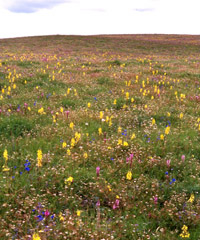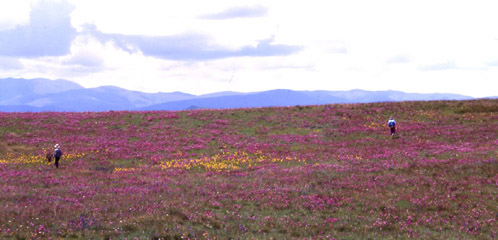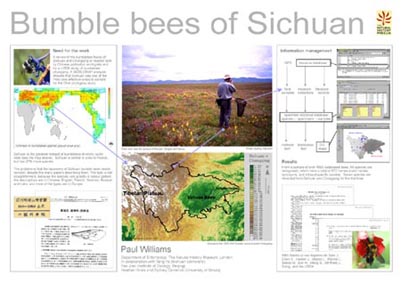In Search of Tibetan Bumble Bees
| Besides possessing a fascinating social system and serving as model organisms for research on foraging behavior, division of labor, recruitment and mimicry, bumble bees have taken me around the world to some of the remotest regions on the planet. Twenty-five years ago when I made my first trip into the Amazon Basin of Peru to study birds (bugs were an unknown to me then), little did I know that one day I would return to the same area to carry out research on a little known species of bumble bee (Bombus transversalis, the Amazonian bumble bee), found only in Amazonia. However, lest you think the Amazon is remote, visit the Tibetan Plateau of Sichuan in southwestern China! Sparsely populated by Tibetan cowboys, yaks and the occasional Buddhist lama (as in Dalai Lama) on a motorcycle, northwestern Sichuan is wild and mountainous. The Chinese call Sichuan the ?eavenly Kingdom? a reference to its bountiful resources, spectacular rivers and mountains, and rich culture spanning more than 2500 years of human history. Home to the protected giant panda, golden langur, and snow leopard, northwestern Sichuan also possesses among the largest and most diverse bumble bee faunas on earth. This was a critical collecting destination for my lab, which plans to complete a worldwide phylogeny of the bumble bees over the next three years. We began our collecting expedition in mid-July: me, Jim Whitfield and Paul Williams of the Natural History Museum in London. We arrived in the provincial capitol of Chengdu and connected with a Chinese collaborator, Dr. Tang Ya of the Chengdu Institute of Biology, who had arranged car and driver, and a route that would take us over 3700 km of primitive roads and maximize the number of species we would bring home. It was a glorious two weeks, traveling along mostly unpaved roads through high grassland valleys (3500–4000 m elevation) blanketed in wildflowers as far as the eye (or binoculars, for that matter) could see. |
|
|
Some of the valleys are 70 km wide and run on for hundreds of km, with only the occasional yak herd or black tents of the nomadic Goloks to interrupt the sweeping vistas across the immense space to distant mountains. The vastness of these flowering meadows is incomprehensible, even while standing in their midst. The hum of bumble bees is a familiar and comforting sound way out there. In this setting, we collected 37 of the 45 known species of bumble bees in Southwestern China. The flowers are as diverse as the bees, including the highest diversity of Pedicularis (lousewort) in the world, along with Aconitum (monkshood), Delphinium (larkspur), Edelweiss and many others. Collecting by day, stopping in small villages for the night, we covered 3700 km from Chengdu, north over the Qionglai Shan range to Zöige near the Gansu border, east to the Min Shan mountains and south through the country of the Qiang people along the Min He River. Our route climbed over several high (>4000 m) passes into alpine meadows surrounded by distant mountains with stunning glaciers. In the early spring these high passes are covered in miles of flowering Rhododendron. |
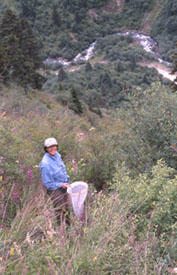 |
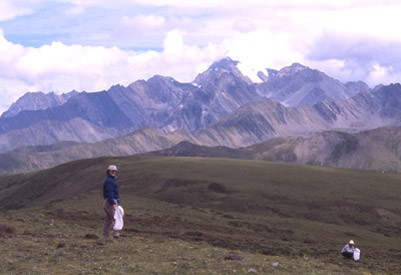 |
Everyone delighted in the spicey food (watch out for the flower peppers!), for which this region of China is famous, although we drew the line at pickled yak meat, yak milk and butter tea. The vegetables were the real treat; many of them we could not identify but enjoyed nonetheless. This is but a small glimpse of the vast Tibetan landscape of southwestern China, but for anyone searching out distant landscapes, relatively untouched and unchanged by the modern world, I guarantee you a grand adventure. |
| Paul Williams' poster of this journey here. |



